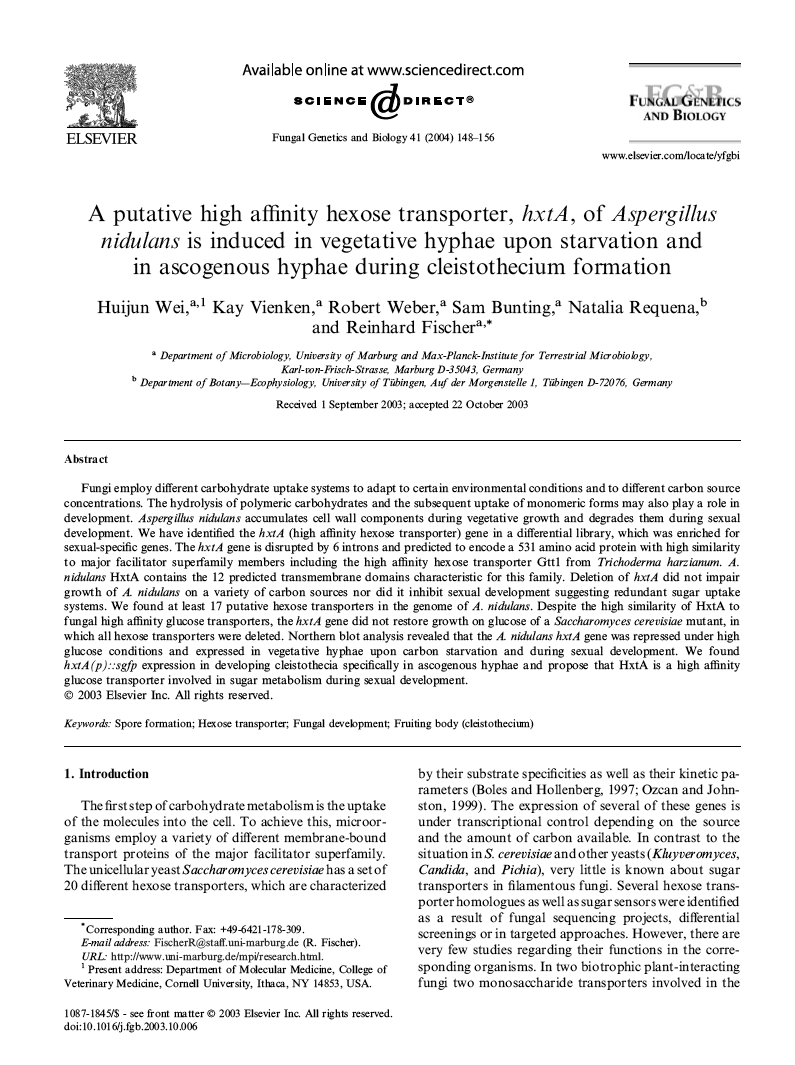Wei et al. 2004
A putative high affinity hexose transporter, hxtA, of Aspergillus nidulans is induced in vegetative hyphae upon starvation and in ascogenous hyphae during cleistothecium formation. Fungal Genet. & Biol., 41, 148-156.
Wei, H., Vienken K., Weber, R., Bunting, S., Requena, N. & Fischer, R.
Abstract
Fungi employ different carbohydrate uptake systems to adapt to certain environmental conditions and to different carbon source concentrations. The hydrolysis of polymeric carbohydrates and the subsequent uptake of monomeric forms may also play a role in development. Aspergillus nidulans accumulates cell wall components during vegetative growth and degrades them during sexual development. We have identified the hxtA (high affinity hexose transporter) gene in a differential library, which was enriched for sexual-specific genes. The hxtA gene is disrupted by 6 introns and predicted to encode a 531 amino acid protein with high similarity to major facilitator superfamily members including the high affinity hexose transporter Gtt1 from Trichoderma harzianum. A. nidulans HxtA contains the 12 predicted transmembrane domains characteristic for this family. Deletion of hxtA did not impair growth of A. nidulans on a variety of carbon sources nor did it inhibit sexual development suggesting redundant sugar uptake systems. We found at least 17 putative hexose transporters in the genome of A. nidulans. Despite the high similarity of HxtA to fungal high affinity glucose transporters, the hxtA gene did not restore growth on glucose of a Saccharomyces cerevisiae mutant, in which all hexose transporters were deleted. Northern blot analysis revealed that the A. nidulans hxtA gene was repressed under high glucose conditions and expressed in vegetative hyphae upon carbon starvation and during sexual development. We found hxtA(p)::sgfp expression in developing cleistothecia specifically in ascogenous hyphae and propose that HxtA is a high affinity glucose transporter involved in sugar metabolism during sexual development.

